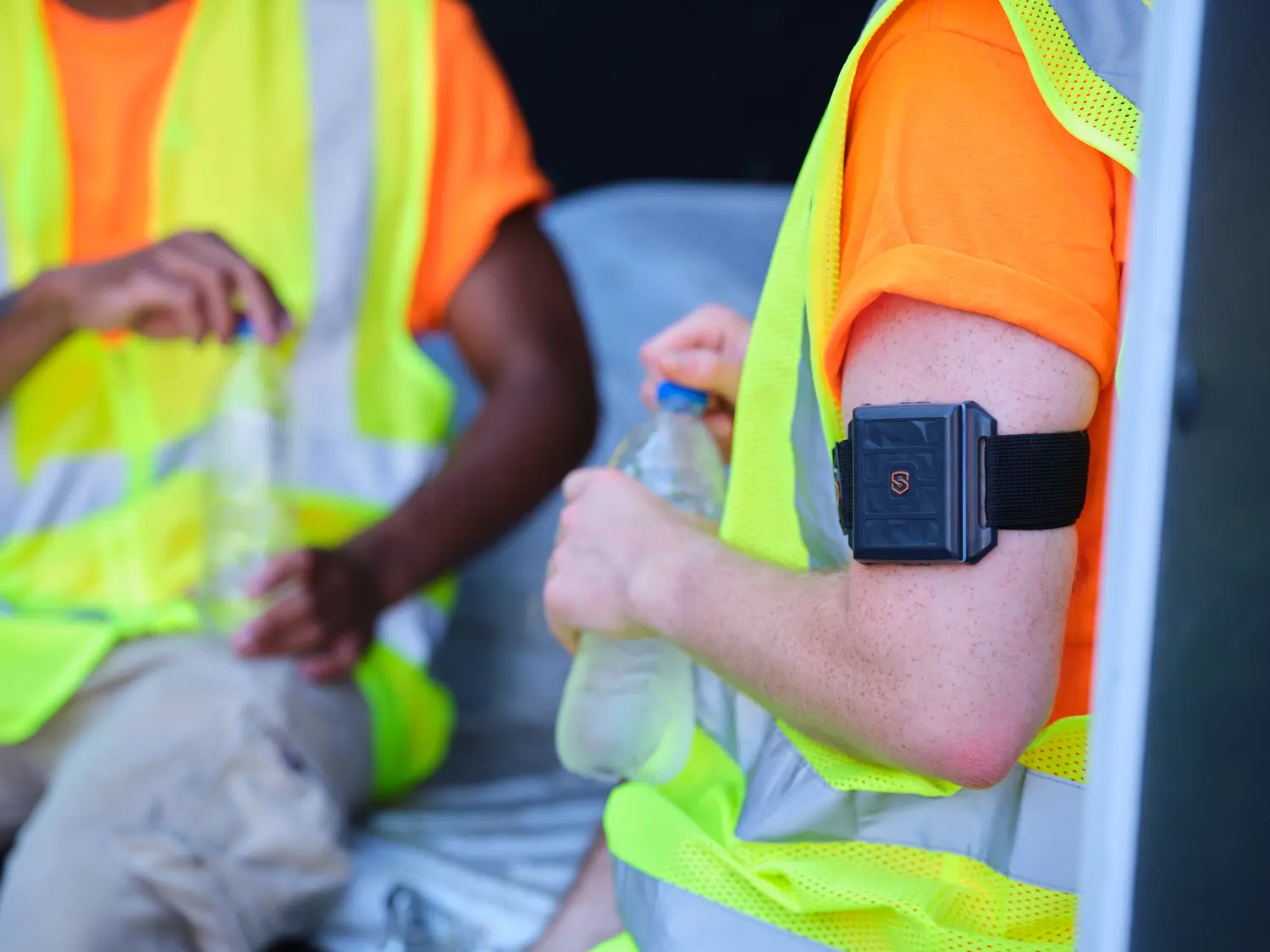For decades, heat has remained a silent threat for many industries. While the media and various occupational health and safety campaigns have begun to focus on outdoor heat risks, indoor environments are not immune to these dangers.
In manufacturing facilities, where the hum of heat-generating machines never ceases, the risk of heat stress often flies under the radar, leading to increased accidents and health issues. Manufacturing needs a heat safety overhaul, and in this article, you’ll learn actionable strategies to keep your workers cool, productive, and safe, and how modern, innovative solutions can help.
The Overlooked Hazard of Indoor Heat
In manufacturing settings, factors like poor ventilation, heavy PPE, and inadequate cooling systems often worsen the situation, creating an effect where hot air lingers and temperatures steadily climb. With the growing frequency and severity of heat waves, possibly influenced by climate change, this problem will only worsen, and businesses must adapt swiftly.
The impact of heat on workers in indoor manufacturing environments is substantial. Numerous studies have shown that many of these workers, particularly in non-air conditioned spaces near hot machinery or furnaces, often experience symptoms of heat illness. Studies also suggest that heat stress can impair physical and cognitive performance, increasing the risk of work-related injuries.
The issue becomes more complicated considering facilities, especially in the food and pharmaceutical sectors, often must keep their environment within a strict range due to the sensitive nature of certain products. This includes precise temperature and machinery settings influenced by specific chemicals or ingredients. Such stringent conditions can make mitigating heat stress challenging, as changes for worker comfort could potentially impact product quality or safety.
So, what do leaders need to be on the lookout for when it comes to heat stress?
Recognizing the Signs of Heat Stress
Identifying early signs of heat stress is crucial in safeguarding workers from the dangers of high indoor temperatures. Both workers and management must understand that heat stress can manifest quickly and unexpectedly, often heightening the urgency for prompt action.
Awareness and early detection are essential. Here is what to look out for:
- Excessive Sweating: A natural response of the body to cool itself, which can lead to dehydration if not properly managed.
- Dizziness and Headaches: Often resulting from dehydration or overheating, can impair a worker’s ability to concentrate and perform tasks safely.
- Nausea and Muscle Cramps: Common indicators signaling that the body is under heat stress and struggling to maintain a stable internal temperature.
- Weakness or Fatigue: This can be especially dangerous in a manufacturing environment where alertness and physical strength are often required for safety.
If you don’t address the above symptoms promptly and effectively, they can escalate to more severe conditions such as:
- Heat Exhaustion: This condition often manifests as heavy sweating, rapid pulse, fainting, and cool, moist skin with goosebumps even in the heat. It also may involve extreme weakness, headache, and muscle cramps, indicating that the body is struggling to cool itself down. If left untreated, heat exhaustion can impair cognitive and physical abilities, making it dangerous to continue working.
- Heatstroke: A more severe form of heat stress, heatstroke is a medical emergency characterized by a body temperature above 104°F (40°C), altered mental state or behavior, alteration in sweating, nausea and vomiting, flushed skin, rapid breathing, and racing heart rate. Unlike heat exhaustion, individuals with heatstroke may stop sweating and have dry skin due to the body’s failure to regulate its temperature. Immediate medical attention is crucial as heatstroke can lead to severe complications or even be fatal.
Equipping managers and workers with the knowledge to recognize these warning signs is essential to combat these risks. Effective training programs are crucial in this regard. They can teach workers to monitor not only themselves but also their coworkers for symptoms of heat stress.
This collective vigilance creates a culture of safety and responsibility, ensuring everyone on the floor looks out for each other. However, awareness is only half the battle. Leaders must take action to protect employees from the dangers of heat stress, and implementing smart safety protocols is where to start.
Implementing Smart Safety Protocols

Heat stress in manufacturing environments is a critical issue requiring established safety protocols. Here are some of the most effective:
- Regulated Work and Rest Cycles: This involves scheduling regular breaks for workers to rest and cool down, particularly during the hottest parts of the day or in areas with high heat exposure. These breaks reduce the risk of heat-related illnesses and provide opportunities for hydration and recovery.
- Hydration: Ensuring easy access to cool drinking water and encouraging regular hydration can significantly reduce the risk of dehydration, a major factor in heat stress. Additionally, educating workers about the importance of staying hydrated and recognizing the signs of dehydration is vital. This education can be part of routine safety training or special sessions focusing on heat stress prevention.
- Modifying the Work Environment: This could mean installing ventilation systems, using fans, or incorporating heat-reflective materials in areas with typical high temperatures. These modifications can help maintain a cooler environment, reducing the risk of heat stress.
- Personal Protective Equipment: PPE designed for high-temperature environments can play a significant role in reducing heat-related injury. This includes lightweight, breathable clothing that allows for effective heat dissipation while protecting the worker. Cooling vests or specially designed headgear can also keep body temperatures within safe limits in certain scenarios.
The above protocols are tried and true methods to improve heat-related safety. However, they can only take you so far. Companies that want to take safety to the next level must start looking towards modern solutions.
Leveraging Technology for Safer Work Conditions

Technology is a pivotal ally in the fight against indoor heat stress. Wearable safety devices and environmental monitoring systems provide real-time data that can preempt heat-related incidents, ensuring worker safety.
Devices such as SlateSafety’s armbands and the BEACON V2 environmental heat stress monitor are prime examples of this technology. SlateSafety’s armbands monitor vital signs like body temperature and heart rate, alerting users to early signs of heat stress. Similarly, the BEACON V2 system keeps track of real-time temperature, relative humidity, and heat index, allowing for adjustments in work practices when temperatures rise to dangerous levels.
By integrating these state-of-the-art tools, businesses are not just reacting to hazardous incidents but preventing them. Don’t wait for the mercury to rise before taking action. Explore how SlateSafety’s wearable armbands and environmental monitoring tools can safeguard your team against heat stress.


